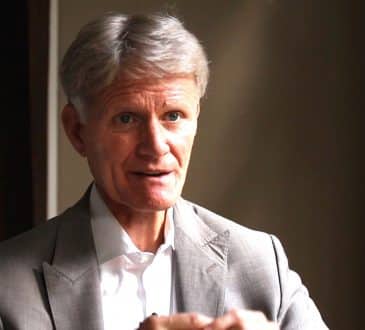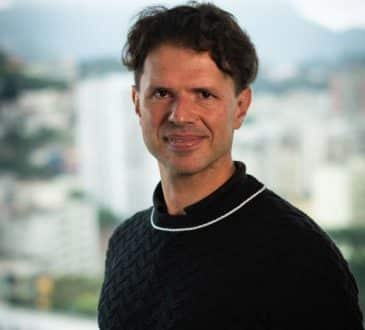Surprising Strategies for New CEO Longevity Amid Record CEO Turnover

Amid record CEO turnover, how can CEOs new to the role be set up for success? For the second year in a row, US CEO turnover reached historically high rates in 2024, according to the Challenger, Gray & Christmas CEO turnover report. 2,021 CEOs departed, which is up 16% from the previous record in 2023.
Additionally, with 11% of CEOs leaving the position within their first year and nearly one third by their third year, CEOs tenure can be brief.
CEOs need new strategies for success and longevity amid record turnover and the immense challenges they face.
As a public company CEO coach and organizational psychologist, I see how increasingly difficult the CEO role has become in the past few years. Last year, I wrote in CEOWORLD about the two hidden reasons not listed in the 2023 record CEO turnover report:
- The demands on CEOs are exponentially increasing given the current economic, social and political climate;
- As a result, CEOs are struggling with higher levels of burnout.
These issues remain prominent for CEOs. While these two factors are becoming more recognized as contributing to CEO turnover, there is opportunity for greater focus to truly support CEOs success.
Now, with the addition UnitedHealthCare CEO Brian Thompson’s murder in December 2024, the CEO role is getting even harder. From the need for increased security, the upsurge in online attacks to the potential of the role becoming less desirable, these intensify the already extreme demands on CEOs.
It’s important for CEOs stepping into the role during this challenging climate not to lose sight of their purpose and the positive impact they hope to make in their company, shareholders and community.
Through my research and experience, I have discovered the two most important and surprising factors for new CEOs to prioritize to be successful in their first year are:
- Care for yourself and your wellbeing
- Get and cultivate the right senior leadership team
The standard guidance for CEOs to focus on strategic and visionary leadership is no longer enough for true effectiveness. Why is that? While it’s an essential outcome, CEOs must begin by building their wellbeing and high performing teams in order to have the space and energy to become strategic and visionary leaders.
Developing these two foundations results in CEOs being more likely to stay in the role long term. CEO longevity is incredibly valuable for organizational stability and provides the ability for CEOs to lead multi-year strategic and culture change efforts for lasting impact.
The first key obstacle hindering a new CEO from attaining peak performance is the lack of attention given to care for themselves and their wellbeing. Though focus on workplace wellbeing has increased in the past five years since the pandemic, it is mostly one sided about the employee. Leaders are expected to lead efforts to improve workforce wellbeing regardless of their own.
Unfortunately, results of a research study where I interviewed CEOs shows when CEOs are suffering from burnout, it not only reduces their effectiveness and productivity, they create negative environments and have an adverse ripple effect on the organization. In contrast, thriving CEOs create the highest leadership capacity, improve team performance and help organizations flourish. This highlights wellbeing is not a nice to have for executives; it is foundational to operating their full leadership potential.
New CEOs are especially prone to burnout, as they tend to sacrifice themselves to meet the tremendous demands of the role. Therefore, it’s important for CEOs to be intentional to not get depleted by the pressures of the role.
The next main obstacle to success is ineffective senior leadership teams. So often, CEOs believe having the right individuals in key positions guarantees they will successfully and seamlessly move the organization forward. However, as only 18% of senior leadership teams are high performing, it’s a misperception that high performing teams are the default. In truth, most senior leadership teams face inefficiencies until they put in additional work to collaborate and build a cohesive team.
Major implications of not having the right and/or underperforming leadership team include:
- A CEO who is focused on the wrong priorities that do not advance the business
- A CEO who is playing multiple C-Suite roles
- A drained and depleted CEO
- A siloed senior leadership team, absorbed in their own priorities, without aligning with the culture including the mission, vision, purpose, and core values
Alternatively, cultivating the right team and culture ensures CEOs can perform the true CEO role leading all aspects of the business and empowering others solve problems. A CEO can only be as effective as their team underneath them.
To lead as a top-level new CEO in it for the long term, it’s essential to prioritize both building a cohesive team and the CEO’s own wellbeing early in the journey. If CEOs wait to focus on either one, they are more likely to get stuck in negative patterns and cycles that will lead to burnout.
How to Prioritize the Two Factors:
CEOs can begin by reflecting on what they actually need to be successful with their wellbeing and senior leadership team. They can consider how to create the conditions to be effective in the role.
Care for Yourself with Vital Leadership
Vital Leadership, a term coined through my research on leader vitality, gives leaders access to their full leadership capacity. Vitality is defined as positive aliveness; it is the inner resource that includes physical, psychological, emotional, and spiritual energy.
To perform at their peak while facing incessant demands, CEOs need a roadmap to cultivate their own energy to deliver on the outputs.
When leaders foster their vitality with Vital Leadership, they have the energy resources to show up at their best and positively impact others. Vitality is on the opposite end of the spectrum of burnout.
Leaders can start by building awareness of their own energy resources, including what fills and drains their energy and how to refuel. This is an individual experience. It’s up to each person to determine what energizes them every day.
Reflection:
Imagine what gives you energy in each of the four categories: physical, psychological, emotional and spiritual. The ideas provided are to get you started and not meant to be comprehensive.
- Physical: What serves your physical body? Ideas: eat real food, drink water, incorporate movement throughout the day, do a physical activity you enjoy or get quality sleep
- Psychological: What activities intellectually stimulate you and give you energy? Ideas: read books, intellectual conversations, podcasts, or develop a new skill
- Emotional: What fills your heart? Ideas: high- quality relationships, give back, or time with family and/or pet(s)
- Spiritual: What connects you to your best self and/or something greater than yourself? Ideas: nature, yoga/meditation, act as a positive leader, community, connect deeply with others
What’s one action you could take to refill your energy this week?
Focus on “How” senior leadership teams accomplish work
One of the first steps CEOs can take is to evaluate their team and make strategic decisions to ensure they have the right team in place to achieve the company’s objectives. Assess the C-Suite talent through learning and listening, while balancing taking action quickly to make changes.
Once the right team is in place, then CEOs can emphasize the longer-term work of cultivating the team.
Developing a cohesive team involves a shift in perspective and focus. So often, teams overemphasize the “what” that they produce. While a strong output is the ultimate goal, achieving the best results requires emphasizing “how” the work gets done.
Focusing on the “how” involves prioritizing team connection and dynamics. I encourage CEOs to create space in team meetings or offsites to attend to the how: how we collaborate, communicate, interact, and complete the work. I ask them to reflect on how to maximize and improve their team effectiveness with the following questions:
- How do we work best together?
- What are our individual strengths and how can those be leveraged across the team?
- What is really working well? What do we need to improve to be more effective?
- How do we communicate most effectively?
- How do we build a healthy executive team culture that can ripple through the organization?
When new CEOs prioritize caring for their wellbeing and cultivating their senior leadership team first, they elevate the CEO role. They can balance the internal and external demands of the position. They have the space and energy to focus on the future, acting as a strategic and visionary leader. In contrast, CEOs without the right team get overly bogged down in the details of the day to day. They are more likely to suffer from burnout by doing multiple C-Suite roles and don’t have the space to promote their wellbeing. Ultimately, focusing on these two priorities fosters sustained CEO peak performance and longevity.
Written by Dr. Jamie Shapiro.
have you read?
Most Innovative Countries in the World.
Countries by Average Wealth per Person.
Countries with the Highest Age Dependency Ratio.
Best Universities In The World.
Bring the best of the CEOWORLD magazine's global journalism to audiences in the United States and around the world. - Add CEOWORLD magazine to your Google News feed.
Follow CEOWORLD magazine headlines on: Google News, LinkedIn, Twitter, and Facebook.
Copyright 2025 The CEOWORLD magazine. All rights reserved. This material (and any extract from it) must not be copied, redistributed or placed on any website, without CEOWORLD magazine' prior written consent. For media queries, please contact: info@ceoworld.biz








